Abstract
OBJECTIVES. To achieve the Healthy People 2000 objectives, public health professionals must develop effective dietary interventions that address psychosocial and behavioral components of change. This study tested the effect of individually computer-tailored messages designed to decrease fat intake and increase fruit and vegetable intake. METHODS. Adult patients from four North Carolina family practices were surveyed at baseline and then randomly assigned to one of two interventions or to a control group. The first intervention consisted of individually computer-tailored nutrition messages; the second consisted of nontailored nutrition information based on the 1990 Dietary Guidelines for Americans. Patients were resurveyed 4 months postintervention. RESULTS. The tailored intervention produced significant decreases in total fat and saturated fat scores compared with those of the control group (P < .05). Total fat was decreased in the tailored group by 23%, in the nontailored group by 9%, and in the control group by 3%. Fruit and vegetable consumption did not increase in any study group. Seventy-three percent of the tailored intervention group recalled receiving a message, compared with 33% of the nontailored intervention group. CONCLUSIONS. Tailored nutrition messages are effective in promoting dietary fat reduction for disease prevention.
Full text
PDF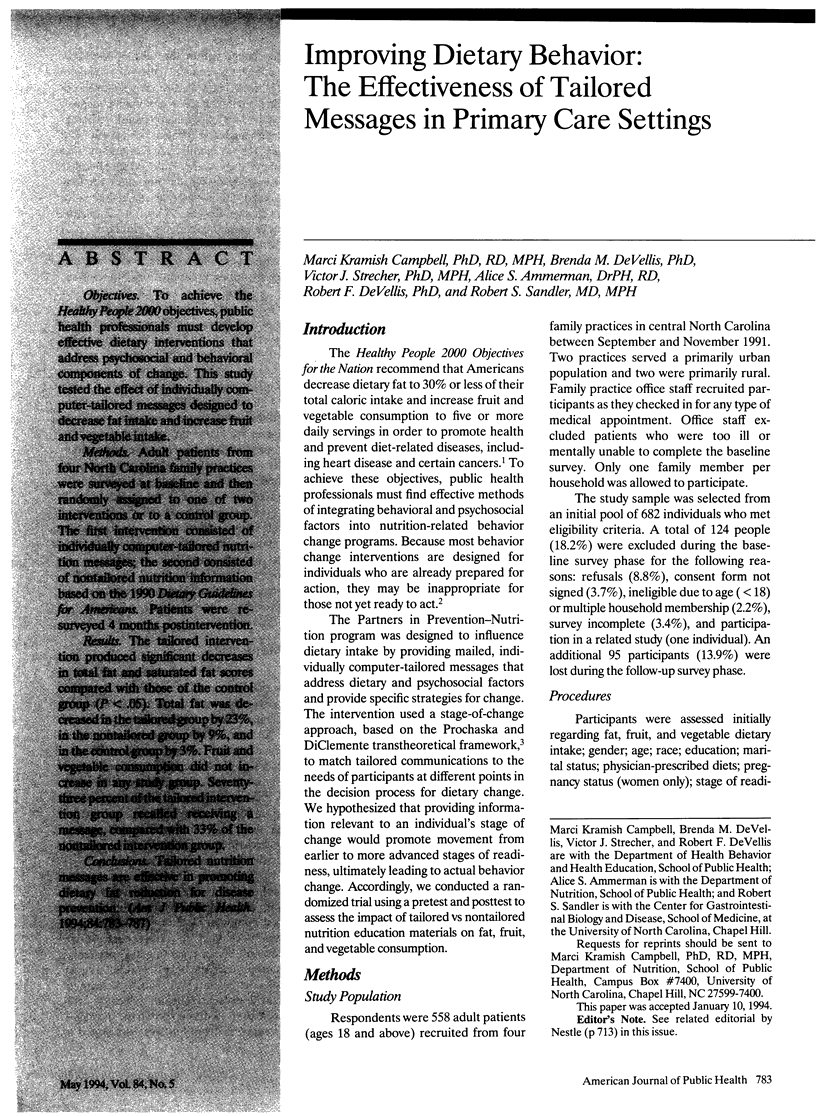
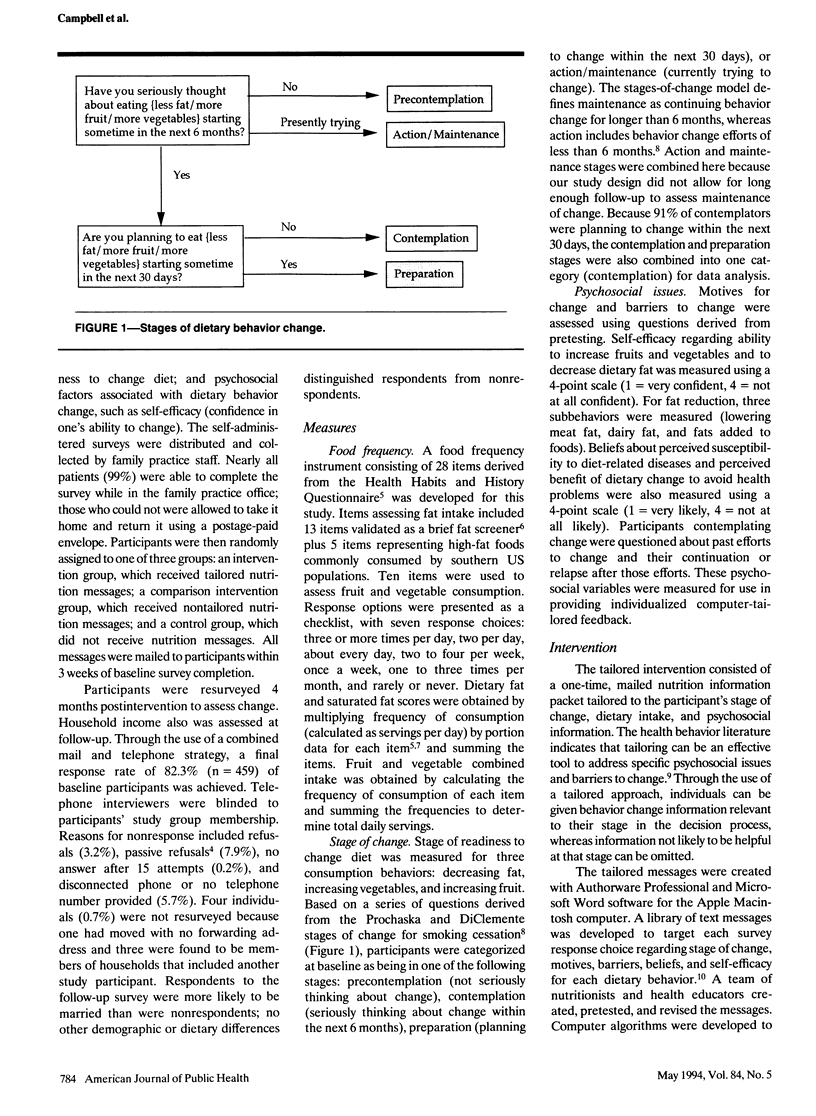
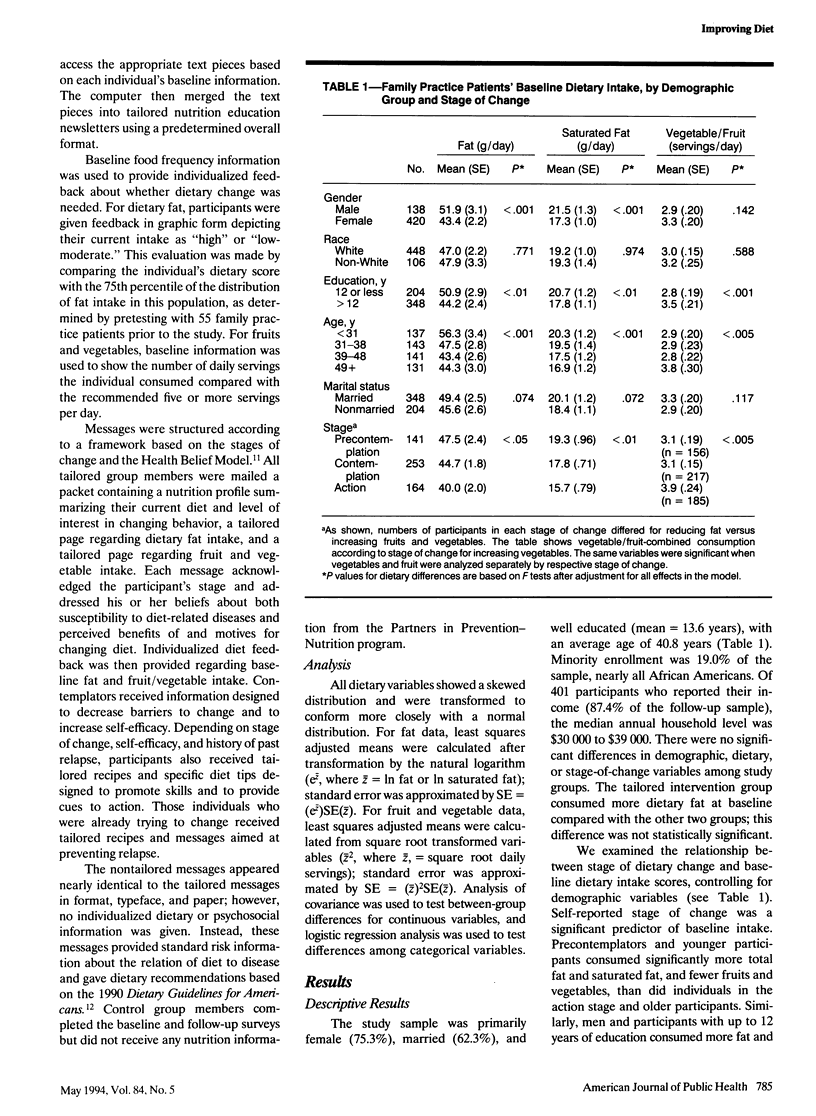
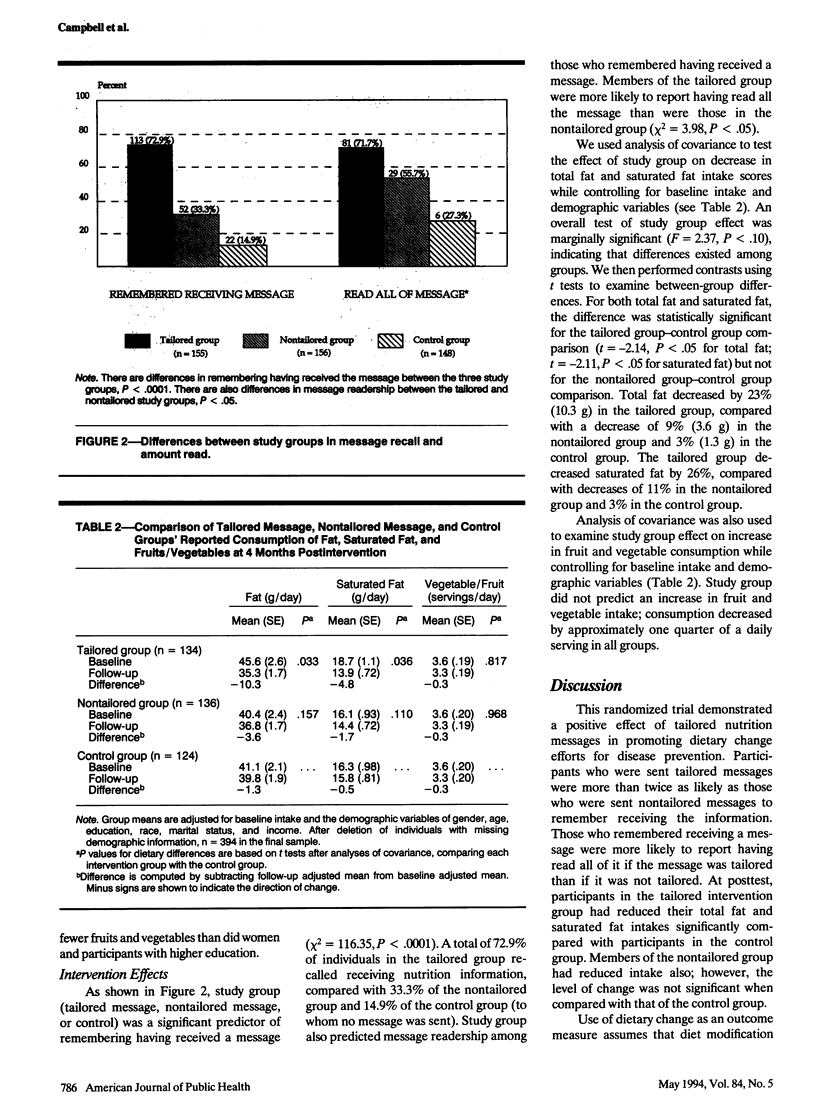
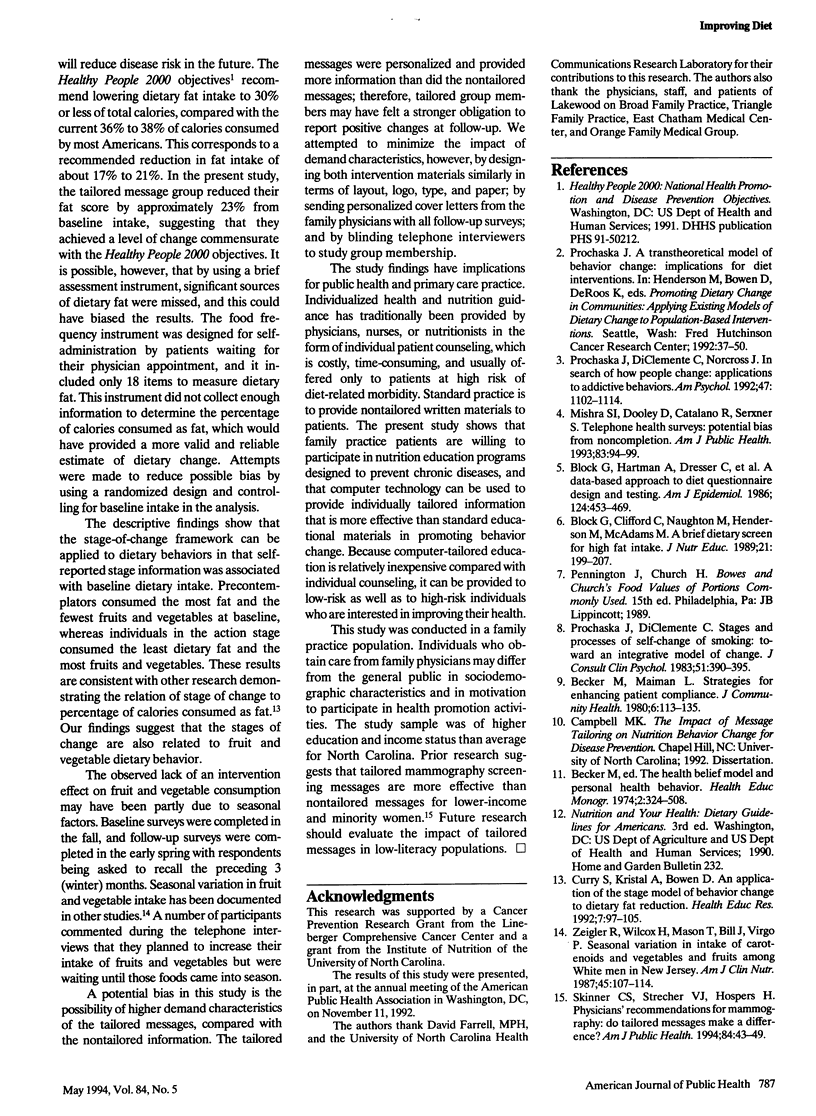
Selected References
These references are in PubMed. This may not be the complete list of references from this article.
- Becker M. H., Maiman L. A. Strategies for enhancing patient compliance. J Community Health. 1980 Winter;6(2):113–135. doi: 10.1007/BF01318980. [DOI] [PubMed] [Google Scholar]
- Block G., Hartman A. M., Dresser C. M., Carroll M. D., Gannon J., Gardner L. A data-based approach to diet questionnaire design and testing. Am J Epidemiol. 1986 Sep;124(3):453–469. doi: 10.1093/oxfordjournals.aje.a114416. [DOI] [PubMed] [Google Scholar]
- Curry S. J., Kristal A. R., Bowen D. J. An application of the stage model of behavior change to dietary fat reduction. Health Educ Res. 1992 Mar;7(1):97–105. doi: 10.1093/her/7.1.97. [DOI] [PubMed] [Google Scholar]
- Mishra S. I., Dooley D., Catalano R., Serxner S. Telephone health surveys: potential bias from noncompletion. Am J Public Health. 1993 Jan;83(1):94–99. doi: 10.2105/ajph.83.1.94. [DOI] [PMC free article] [PubMed] [Google Scholar]
- Prochaska J. O., DiClemente C. C., Norcross J. C. In search of how people change. Applications to addictive behaviors. Am Psychol. 1992 Sep;47(9):1102–1114. doi: 10.1037//0003-066x.47.9.1102. [DOI] [PubMed] [Google Scholar]
- Prochaska J. O., DiClemente C. C. Stages and processes of self-change of smoking: toward an integrative model of change. J Consult Clin Psychol. 1983 Jun;51(3):390–395. doi: 10.1037//0022-006x.51.3.390. [DOI] [PubMed] [Google Scholar]
- Skinner C. S., Strecher V. J., Hospers H. Physicians' recommendations for mammography: do tailored messages make a difference? Am J Public Health. 1994 Jan;84(1):43–49. doi: 10.2105/ajph.84.1.43. [DOI] [PMC free article] [PubMed] [Google Scholar]
- Ziegler R. G., Wilcox H. B., 3rd, Mason T. J., Bill J. S., Virgo P. W. Seasonal variation in intake of carotenoids and vegetables and fruits among white men in New Jersey. Am J Clin Nutr. 1987 Jan;45(1):107–114. doi: 10.1093/ajcn/45.1.107. [DOI] [PubMed] [Google Scholar]


